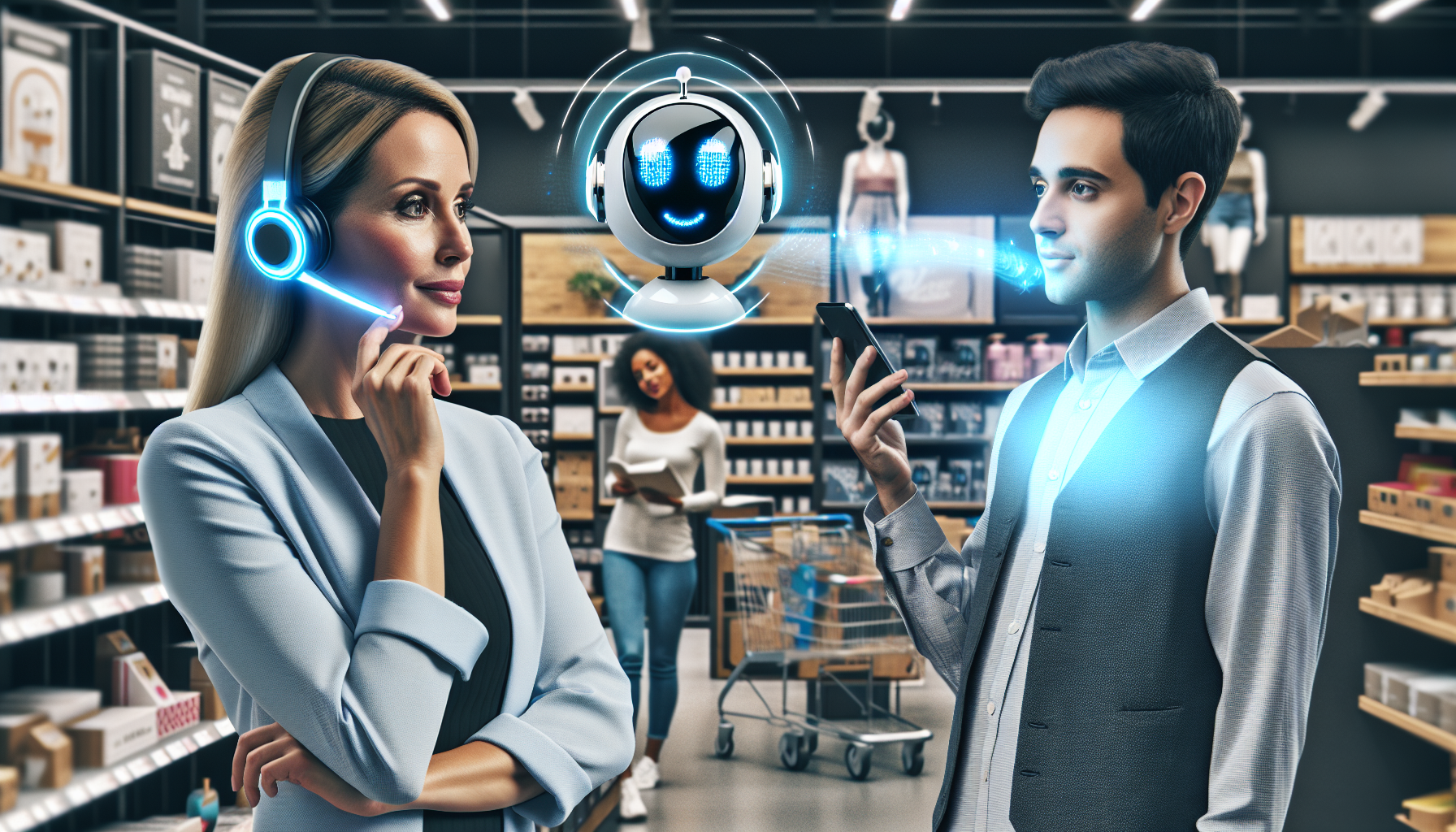The Rise of AI Chatbots in Retail and eCommerce
AI chatbots have emerged as invaluable tools for businesses in the retail and eCommerce sectors. With the ability to assist customers promptly and effectively, these digital assistants are redefining customer service experiences. As consumer expectations grow increasingly demanding, leveraging AI chatbots to enhance service delivery is becoming essential for gaining a competitive edge.
Understanding Chatbot Technology
Chatbots are powered by artificial intelligence (AI) and natural language processing (NLP). These technologies enable chatbots to understand and respond to customer inquiries in a conversational manner. They can be programmed to handle a wide range of tasks, from answering frequently asked questions to processing orders, thus streamlining operations in retail and eCommerce environments.
Benefits of AI Chatbots
-
24/7 Availability: One of the primary advantages of AI chatbots is their ability to provide round-the-clock service. Customers can have their questions addressed at any time, which is especially important for online shopping where customer engagement doesn’t adhere to traditional business hours.
-
Instant Response Times: AI chatbots provide instant responses, significantly reducing waiting times for customers. This promptness enhances the user experience and can lead to higher customer satisfaction and retention rates.
-
Handling Volume: Retail and eCommerce businesses often experience fluctuations in customer inquiries. Chatbots can manage multiple conversations simultaneously, ensuring that every customer gets the attention they need without overwhelming human staff.
-
Personalization: Leveraging data analytics, chatbots can offer personalized recommendations based on customer preferences and shopping histories. This tailored approach not only improves customer engagement but can also increase the likelihood of sales conversions.
-
Cost-Effectiveness: Implementing AI chatbots can help reduce operational costs. By automating routine tasks, businesses can allocate resources more effectively, allowing human employees to focus on more complex customer issues that require a personal touch.
Implementing AI Chatbots in Retail
1. Customer Inquiry Management
AI chatbots excel at resolving basic customer inquiries such as product availability, return policies, and order statuses. By providing immediate answers, customers feel valued and are less likely to abandon their shopping carts due to uncertainty or frustration.
2. Product Recommendations
Integrating chatbots with eCommerce websites allows them to offer personalized product suggestions based on user behavior and previous purchases. This recommendation engine can enhance upselling and cross-selling opportunities, directly contributing to increased sales.
3. Purchase Assistance
Chatbots can guide customers through the purchasing process, making it seamless. By assisting with filling out forms or facilitating payment methods, they ensure users do not experience friction during checkout, which is a common hurdle in eCommerce.
4. Post-Purchase Support
Customer service does not end with a transaction. AI chatbots can facilitate post-purchase interactions, including tracking orders, managing returns, and handling complaints. This continued engagement can build brand loyalty and encourage repeat purchases.
Best Practices for AI Chatbot Implementation
1. Define Clear Objectives
Before deploying chatbots, businesses must establish clear goals. Understanding what issues the chatbot will address and how it fits into the overall customer service strategy is crucial for effectiveness.
2. Design User-Friendly Interactions
Creating a user-friendly dialogue flow is essential. Chatbots should engage customers naturally, using clear language and a friendly tone. Potential questions should be anticipated to create a more intuitive experience.
3. Continuous Learning and Improvement
AI chatbots thrive on data. Regularly monitoring interactions and customer feedback allows businesses to refine the chatbot’s performance continually. Adjustments may involve adapting language or expanding the knowledge base, ensuring that the chatbot evolves based on real customer needs.
4. Ensure Seamless Human Handover
While chatbots handle a variety of tasks, there will be instances that require human intervention. Establishing a seamless transition from chatbot to human representative is essential for maintaining customer satisfaction and ensuring complex issues are resolved.
Case Studies of Successful AI Chatbot Implementations
Case Study 1: Sephora
Sephora utilizes an AI chatbot to offer personalized beauty recommendations based on user preferences and skin types. The chatbot, found on their website and mobile app, assists customers in finding products and provides tutorials. This integration has increased customer engagement and provided an innovative shopping experience.
Case Study 2: H&M
H&M’s chatbot helps customers navigate their extensive clothing line, providing styling advice and outfit ideas. By integrating with an inventory system, the chatbot can show real-time product availability, making it easier for customers to make informed purchasing decisions.
Future Trends of AI Chatbots in Retail and eCommerce
As technology advances, the capabilities of AI chatbots will continue to grow. Future trends may include:
-
Voice-Activated Chatbots: With the rise of voice technology, chatbots will evolve to understand and respond to verbal inquiries, offering a hands-free shopping experience.
-
Emotional Intelligence: AI algorithms will likely develop better emotional intelligence to recognize and respond to customer sentiments, providing a more empathetic service experience.
-
Integration with Augmented Reality (AR): Chatbots may incorporate AR features, allowing customers to visualize products in their environments or try on clothing virtually, enhancing the online shopping experience.
Conclusion
AI chatbots are transforming customer service in retail and eCommerce by providing efficient, personalized, and accessible support. As businesses continue to adopt and refine chatbot technology, the potential for improved customer experiences and increased sales will only grow. Embracing these changes will help businesses remain competitive in the ever-evolving digital marketplace.


